Montserrat
| Montserrat |
||||||
|---|---|---|---|---|---|---|
|
||||||
| Motto: "A people of excellence, moulded by nature, nurtured by God" | ||||||
| Anthem: "God Save the Queen" | ||||||
.svg.png) Location of Montserrat (circled in red) in the Caribbean (light yellow) |
||||||
_-_MSR_-_UNOCHA.svg.png) |
||||||
| Status | British Overseas Territory | |||||
| Capital |
| |||||
| Largest city | Brades | |||||
| Official languages | English | |||||
| Ethnic groups ([1]) | ||||||
| Demonym | Montserratian | |||||
| Government | Parliamentary dependency under constitutional monarchy | |||||
| - | Monarch | Elizabeth II | ||||
| - | Governor | Adrian Davis | ||||
| - | Premier | Donaldson Romeo | ||||
| - | Responsible Ministerb (UK) | James Duddridge MP | ||||
| Legislature | Legislative Council | |||||
| Establishment | ||||||
| - | English control established | 1632 | ||||
| Area | ||||||
| - | Total | 102 km2 (219th) 39 sq mi |
||||
| - | Water (%) | negligible | ||||
| Population | ||||||
| - | 2012 estimate | 4,900 (233rd) | ||||
| - | Density | 44/km2 (153rd) 114/sq mi |
||||
| GDP (PPP) | 2006 estimate | |||||
| - | Total | $43.500 million (not ranked) | ||||
| - | Per capita | $8,500 (not ranked) | ||||
| Currency | East Caribbean dollar (XCD) | |||||
| Time zone | (UTC−4) | |||||
| Drives on the | left | |||||
| Calling code | +1 664 | |||||
| ISO 3166 code | MS | |||||
| Internet TLD | .ms | |||||
| a. | Abandoned in 1997 following a volcanic eruption. Government buildings are in Brades, making it the de facto capital. | |||||
| b. | For the Overseas Territories. | |||||
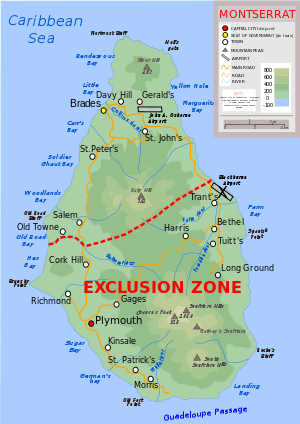
Montserrat (/mɒntsəˈræt/) is an island which is a British Overseas Territory in the Caribbean, specifically in the Leeward Islands, part of the chain known as the Lesser Antilles, in the West Indies. Montserrat measures approximately 16 km (10 mi) long and 11 km (7 mi) wide, with approximately 40 kilometres (25 mi) of coastline.[2] Montserrat is nicknamed The Emerald Isle of the Caribbean both for its resemblance to coastal Ireland and for the Irish ancestry of some of its inhabitants.[3]
On 18 July 1995, the previously dormant Soufrière Hills volcano, in the southern part of the island, became active. Eruptions destroyed Montserrat's Georgian era capital city of Plymouth and two-thirds of the island's population was forced to flee.[4] The volcanic activity continues, mostly affecting the vicinity of Plymouth, including its docking facilities, and the eastern side of the island around the former W. H. Bramble Airport, the remnants of which were buried by flows from volcanic activity on 11 February 2010.
An exclusion zone that extends from the south coast of the island north to parts of the Belham Valley was imposed because of the size of the existing volcanic dome and the resulting potential for pyroclastic activity. Visitors are generally not permitted entry into the exclusion zone, but an impressive view of the destruction of Plymouth can be seen from the top of Garibaldi Hill in Isles Bay. Relatively quiet since early 2010, the volcano continues to be closely monitored by the Montserrat Volcano Observatory.
A new town and port is being developed at Little Bay, which is on the northwest coast of the island. While this construction proceeds, the centre of government and businesses rests at Brades.
History

Archaeological field work in 2012 in Montserrat's Centre Hills indicated there was an Archaic (pre-Arawak) occupation between 4000 and 2500 BP.[5] Later coastal sites show the presence of the Saladoid culture.[6] In November 1493 Christopher Columbus passed Montserrat in his second voyage, after being told that the island was unoccupied due to raids by the Caribs.[7] Columbus named the island Santa María de Montserrat, after the Virgin of Montserrat in the Monastery of Montserrat, near Barcelona in Spain.[8] The island came under English control in 1632[9] when anti-Catholic violence in Nevis forced a group of Irish transported from Ireland as slaves, to settle in Montserrat. A neo-feudal colony developed amongst the "redlegs".[10]
The colonists began to import African slaves for labour, as was common to most Caribbean islands. The colonists built an economy based on the production of sugar, rum, arrowroot and Sea Island Cotton, cultivated on large plantations manned by slave labour. By the late 1700s, numerous plantations had been developed on the island. Many Irish people were also transported to the island, to work as slaves, indentured servants or exiled prisoners; some were exiled during the English Cromwellian conquest of Ireland.[11]
18th century
On 17 March 1768, slaves rebelled but failed to achieve freedom.[12] The people of Montserrat celebrate St Patrick's Day as a public holiday due to the slave revolt. Festivities held that week commemorate the culture of Montserrat in song, dance, food and traditional costumes.
In 1782, during the American Revolutionary War, France briefly captured Montserrat after supporting the American rebels. The French returned the island to Great Britain under the 1783 Treaty of Paris, which ended that conflict.
New crops and politics
Britain abolished slavery in Montserrat and its other Caribbean territories effective August 1834.
During the nineteenth century, falling sugar-prices had an adverse effect on the island's economy, as Brazil and other nations competed in the trade.
In 1857, the British philanthropist Joseph Sturge bought a sugar estate to prove it was economically viable to employ paid labour rather than slaves. Numerous members of the Sturge family bought additional land. In 1869 the family established the Montserrat Company Limited and planted lime trees, started the commercial production of lime juice, set up a school, and sold parcels of land to the inhabitants of the island. Much of Montserrat came to be owned by smallholders.[11][13]
From 1871 to 1958, Montserrat was administered as part of the federal crown colony of the British Leeward Islands, becoming a province of the short-lived West Indies Federation from 1958 to 1962.
In 1979, The Beatles producer George Martin’s AIR Studios Montserrat opened. The island attracted world-famous musicians, who came to record in the peaceful and lush tropical surroundings of Montserrat.[14] The last decade of the twentieth century, however, brought two events that devastated the island.
In the early hours of 17 September 1989, Hurricane Hugo, a Category 4 storm, struck Montserrat with full force, producing sustained winds of 140 kilometres (87 mi). It damaged more than 90 percent of the structures on the island. AIR Studios closed, and the tourist economy was virtually wiped out. Within a few years, the island had recovered considerably, only to be damaged again, and even more severely, six years later by volcanic activity that started in 1995.
Geography

The island of Montserrat is approximately 480 km (300 mi) east-southeast of Puerto Rico and 48 km (30 mi) southwest of Antigua. It comprises 104 km2 (40 sq mi) and is gradually increasing owing to the buildup of volcanic deposits on the southeast coast. The island is 16 km (9.9 mi) long and 11 km (6.8 mi) wide, with rock cliffs rising 15 to 30 m (50–100 feet) above the sea and a number of smooth bottomed sandy beaches scattered among coves on the western (Caribbean) side of the island.
Montserrat has two islets, Little Redonda and Virgin, as well as Statue Rock.
Demographics
The island has a population of 5,879 (2008 estimate). An estimated 8,000 refugees left the island (primarily to the UK) following the resumption of volcanic activity in July 1995; the population was 13,000 in 1994.
Age structure
- 0–14 years: 23.4% (male 1,062; female 1,041)
- 15–64 years: 65.3% (male 2,805; female 3,066)
- 65 years and over: 11.3% (male 537; female 484) (2003 est.)
The median age of the population was 28.1 as of 2002 and the sex ratio was 0.96 males/female as of 2000.
The population growth rate is 6.9% (2008 est.), with a birth rate of 17.57 births/1,000 population, death rate of 7.34 deaths/1,000 population (2003 est.), and net migration rate of 195.35/1,000 population (2000 est.) There is an infant mortality rate of 7.77 deaths/1,000 live births (2003 est.). The life expectancy at birth is 78.36 years: 76.24 for males and 80.59 for females (2003 est.). The total fertility rate is 1.8 children born/woman (2003 est.).
Residents of Montserrat are known as Montserratians. The population consists of a number of ethnic groups: Black (88.4%), White, Dual Heritage, Creole. The island's population is mainly a mix of British, Irish and Africans with other minorities.
The population is predominantly, but not exclusively, of mixed African-Irish descent.[15][16] The number of people from Africa and Ireland brought to the island as slaves are not known with certainty but an estimated high of 60,000 to a low of 12,000 Irish were "Barbadosed" by Cromwell,[17] some of which likely arrived in Montserrat.
Volcano and exclusion zone
In July 1995, Montserrat's Soufrière Hills volcano, dormant for centuries, erupted and soon buried the island's capital, Plymouth, in more than 12 metres (39 ft) of mud, destroyed its airport and docking facilities, and rendered the southern part of the island, now termed the exclusion zone, uninhabitable and not safe for travel. The southern part of the island was evacuated and visits are severely restricted.[18] The exclusion zone also includes two sea areas adjacent to the land areas of most volcanic activity.[19]
After the destruction of Plymouth and disruption of the economy, more than half of the population left the island, which also lacked housing. During the late 1990s, additional eruptions occurred. On 25 June 1997 a pyroclastic flow travelled down Mosquito Ghaut. This pyroclastic surge could not be restrained by the ghaut and spilled out of it, killing 19 people who were in the (officially evacuated) Streatham village area. Several others in the area suffered severe burns. For a number of years in the early 2000s, the volcano's activity consisted mostly of infrequent ventings of ash into the uninhabited areas in the south. The ash falls occasionally extended into the northern and western parts of the island. In the most recent period of increased activity at the Soufrière Hills volcano, from November 2009 through February 2010, ash vented and there was a vulcanian explosion that sent pyroclastic flows down several sides of the mountain. Travel into parts of the exclusion zone is occasionally allowed, only by a licence from the Royal Montserrat Police Force.[20]
The northern part of Montserrat has barely been affected by volcanic activity, and remains lush and green. In February 2005, The Princess Royal officially opened what is now called the John A. Osborne Airport in the north. As of 2011, it handles several flights daily operated by Fly Montserrat Airways. Docking facilities are in place at Little Bay, where the new capital town is being constructed; the new government centre is at Brades, a short distance away.
In recognition of the disaster, in 1998 the people of Montserrat were granted full residency rights in the United Kingdom, allowing them to migrate if they chose. British citizenship was granted in 2002.
Economy
From 1979 to 1989, Montserrat was home to a branch of George Martin's AIR Studios, making the island popular with musicians who often went there to record while taking advantage of the island's climate and beautiful surroundings; the studio closed as a result of Hurricane Hugo.[21]
Since the devastations of Hurricane Hugo and the eruption of the Soufriere Hills Volcano, the Montserratian economy has been effectively halted. Export businesses based in Montserrat deal primarily in the selling and shipping of aggregate for construction. Imports include virtually everything available for sale on the island.
The island's operating budget is largely supplied by the British government and administered through the Department for International Development (DFID) amounting to approximately £25 million per year. Additional amounts are secured through income and property taxes, licence and other fees as well as customs duties levied on imported goods.
Military
As a British Overseas Territory (BOT), defence of Montserrat remains the responsibility of the United Kingdom. Montserrat is one of four of the remaining fourteen BOTs that maintains its own military unit, the Royal Montserrat Defence Force. There is also a cadet corps for secondary school students.
Wildlife
Montserrat, like many isolated islands, is home to some exceptionally rare plant and animal species. Work undertaken by the Montserrat National Trust in collaboration with the Royal Botanic Gardens, Kew has centred on the conservation of pribby (Rondeletia buxifolia) in the Centre Hills region. Until 2006, this species was known only from one book about the vegetation of Montserrat.[22] In 2006, conservationists also rescued several plants of the endangered Montserrat orchid (Epidendrum montserratense) from dead trees on the island and installed them in the security of the island's botanic garden.
Montserrat is also home to the critically endangered Giant Ditch Frog (Leptodactylus fallax), known locally as the Mountain Chicken, found only in Montserrat and Dominica. The species has undergone catastrophic declines due to the amphibian disease Chytridiomycosis and the volcanic eruption in 1997. Experts from Durrell Wildlife Conservation Trust have been working with the Montserrat Department of Environment to conserve the frog in-situ in a project called "Saving the Mountain Chicken",[23] and an ex-situ captive breeding population has been set up in partnership with Durrell Wildlife Conservation Trust, Zoological Society of London, North of England Zoological Society, Parken Zoo and the Governments of Montserrat and Dominica. Releases from this programme have already taken place in a hope to increase the numbers of the frog and reduce extinction risk from Chytridiomycosis.
Montserrat is known for its coral reefs and its caves along the shore. These caves house many species of bats, and efforts are underway to monitor and protect the ten species of bats from extinction.[24][25]
Culture
.jpg)
Many albums of note were recorded at AIR Studios, including Dire Straits' Brothers in Arms; Duran Duran's Rio, the Police's Ghost in the Machine and Synchronicity (the video for Every Little Thing She Does Is Magic was filmed in Montserrat, but the song ironically was the only one on Ghost in the Machine not recorded there), and Jimmy Buffett's Volcano (named for Soufrière Hills). After sustaining severe damage from Hurricane Hugo in 1989, the studio is now a ruin.[26] Ian Anderson (of Jethro Tull) recorded the song "Montserrat" off "The Secret Language of Birds" in tribute to the volcanic difficulties and feeling among residents of being abandoned by the UK government.
Sports
Cricket is a popular sport in Montserrat. Players from Montserrat are eligible to play for the West Indies cricket team. Jim Allen was the first to play for West Indies and he represented the World Series Cricket West Indians. No other player from Montserrat had gone on to represent West Indies until Lionel Baker made his One Day International debut against Pakistan in November 2008.[27] The Montserrat cricket team forms a part of the Leeward Islands cricket team in regional domestic cricket, however it plays as a separate entity in minor regional matches,[28] as well having previously played Twenty20 cricket in the Stanford 20/20.[29] Two grounds on the island have held first-class matches for the Leeward Islands, the first and most historic was Sturge Park in Plymouth, which had been in use since the 1920s. This was destroyed in 1997 by the volcanic eruption. A new ground, the Salem Oval, was constructed and opened in 2000. This has also held first-class cricket. A second ground has been constructed at Little Bay.[30] The sport of surfing was introduced by two American brothers in 1980, Carrll and Gary Robilotta. They were also responsible for naming the surfing spots on the island. Carrll wrote for the surfing newsletter The Surf Report, which was used by surfers around the globe. They both made Montserrat their home for 12 years.
Montserrat has its own FIFA affiliated football team, and has competed in the World Cup qualifiers five times but failed to advance to the finals from 2002 to 2018. A field for the team was built near the airport by FIFA. In 2002, the team competed in a friendly match with the second-lowest-ranked team in FIFA at that time, Bhutan, in The Other Final, the same day as the final of the 2002 World Cup. Bhutan won 4–0.
Montserrat has competed in every Commonwealth Games since 1994.[31]
Parishes

Montserrat is divided into three parishes:
- Saint Peter Parish
- Saint Anthony Parish
- Saint Georges Parish
The locations of settlements on the island have been vastly changed since the volcanic activity began. Only Saint Peter Parish in the northwest of the island is now inhabited, with a population of between 4,000 and 6,000.[32][33] The other two parishes are still too dangerous to inhabit; the volcano is still active in 2013.
Settlements
Villages and towns that are within the safe zone are shown in boldface. The settlements that are known to be within the exclusion zone are shown in italics, since they cannot be accessed and are no longer habitable. See also List of settlements abandoned after the 1997 Soufrière Hills eruption.
|
|
a. De facto capital and centre of government.
b. Includes the new airport.
c. New seaport and town.
d. Official capital, now abandoned.
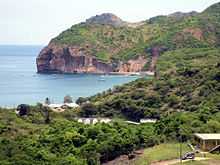
Notable Montserratians
- Olaudah Equiano, (also known as Gustavus Vassa), an 18th-century abolitionist and writer.
- Alphonsus "Arrow" Cassell, musician known for his soca song "Hot Hot Hot", which sold over 4 million copies.
- Jim Allen, former cricketer who represented the World Series Cricket West Indians.
- Lionel Baker, the first Montserratian to represent the West Indies in international cricket.
- M. P. Shiel, writer.
- Maizie Williams, member of pop group Boney M.
- Lyle Taylor, association footballer.
- Vladimir Farrell, association footballer.
- Dean Mason, association footballer.
- Howard A. Fergus, author, poet and three time acting governor of Montserrat.
- E A Markham, poet and author.
See also
- Outline of Montserrat
- Bibliography of Montserrat
- Index of Montserrat-related articles
- Irish diaspora
- United Nations list of Non-Self-Governing Territories
- Special Committee on Decolonization
References
- ↑ "Irish Heritage". History. Visit Montserrat
- ↑ "Montserrat". World Factbook. CIA. 19 September 2006. Retrieved 1 October 2006
- ↑ url=http://www.youtube.com/watch?v=0QHYFXDGf4Y
- ↑ "Volcano Observatory". Montserrat. Retrieved 2 October 2006
- ↑ Cherry, John F.; and Ryzewski, Krysta; and Leppard, Thomas P.; and Bocancea, Emanuela (September 2012). "The earliest phase of settlement in the eastern Caribbean: new evidence from Montserrat". Antiquity 86 (333). Retrieved 25 August 2013.
- ↑ Reid, Basil A. (2009). Myths and Realities of Caribbean History. University of Alabama Press. p. 21. ISBN 0817355340.
"However, archaeological investigations of the very large site of Trants in Montserrat ... [suggest that Trants was] one of the largest Saladoid sites in the Caribbean"" - ↑ Bergreen, Laurence (2011). Columbus: The Four Voyages. Viking. p. 140. ISBN 9780670023011.
At daybreak on November 10, Columbus and his fleet departed from Guadeloupe, sailing northwest along the coast to the island of Montserrat. The handful of Indians aboard his ship explained that the island had been ravaged by the Caribs, who had 'eaten all its inhabitants'. ." - ↑ The Complete Guide to National Symbols and Emblems: Volume 2, page 724
- ↑ "Montserrat". CIA World Factbook. 23 April 2009. Retrieved 7 May 2009.
- ↑ Akenson, Donald H. (1997). "Ireland's neo-Feudal Empire, 1630–1650". If the Irish ran the world: Montserrat, 1630–1730. McGill-Queen's Press – MQUP. pp. 12–57, 273. ISBN 978-0-7735-1686-1.
- ↑ 11.0 11.1 Countries and Their Cultures: Montserrat (2012), available online.
- ↑ Fergus, Howard A (1996). Gallery Montserrat: some prominent people in our history. Canoe Press University of West Indies. p. 83. ISBN 976-8125-25-X.
- ↑ "Montserrat". Commonwealth Secretariat. Retrieved 30 January 2007
- ↑ "Montserrat". George Martin Music
- ↑ "How Irish is Montserrat (The Black Irish) by Brian McGinn".
- ↑ Tri S Ranch: The Irish Slave Trade — The Forgotten "White" Slaves. The Slaves That Time Forgot, by John Martin
- ↑ "Tangled Roots Barbadosed Africans and Irish in Barbados".
- ↑ Leonard, T. M. (2005). 'Encyclopedia of the Developing World'. Routledge. pp.1083. ISBN 978-1-57958-388-0
- ↑
- ↑ "Montserrat (British Overseas Territory) travel advice". Travel & living abroad. Foreign and Commonwealth Office. 19 December 2012. Retrieved 31 December 2012.
- ↑ "AIR Montserrat". AIR Studios. Retrieved 5 January 2013.
- ↑ The 'Montserrat pribby' (part one). By: Nick Johnson – 22 October 2010. Retrieved 30 November 2010
- ↑ "Saving the Mountain Chicken"
- ↑
- ↑ Pedersen, Scott C., Kwiecinski, Gary G., Larsen, Peter A., Morton, Matthew N., Adams, Rick A., Genoways, Hugh H. (1 January 2009). "Scientific Commons: Bats of Montserrat: Population Fluctuation and Response to Hurricanes and Volcanoes, 1978–2005 (2009)". En.scientificcommons.org. Retrieved 31 July 2011.
- ↑ http://www.airstudios.com/about-us/history/air-montserrat/
- ↑ Late Show Wins It For Pakistan In Abu Dhabi
- ↑ "Other Matches played by Montserrat". CricketArchive. Retrieved 12 October 2012.
- ↑ "Twenty20 Matches played by Montserrat". CricketArchive. Retrieved 7 October 2012.
- ↑ "Island of Montserrat". Foreign and Commonwealth Office. www.ukinmontserrat.fco.gov.uk. Retrieved 13 October 2012.
- ↑ "Commonwealth Games Countries: Montserrat". Commonwealth Games Federation. Retrieved 24 July 2014.
- ↑ Central America and Caribbean: Monserrat. Jeff Kowalski. 11 September 2009. Accessed 26 October 2009.
- ↑ As visible at The Parishes of Montserrat. Statoids. Accessed 26 October 2009.
- ↑ http://projects.dfid.gov.uk/project.aspx?Project=113987
- To Hell or Barbados: The Ethnic Cleansing of Ireland by Sean O'Callaghan, Brandon (2000), an imprint of Mt Eagle Publications, Dingle Co. Kerry, Ireland.
External links
- Government
- Government of Montserrat
- Montserrat National Trust
- Montserrat Hospitality Association
- Premier of Montserrat
- General information
- Montserrat entry at The World Factbook
- Montserrat from UCB Libraries GovPubs.
- Montserrat at DMOZ
- Montserrat Webdirectory
-
 Wikimedia Atlas of Montserrat
Wikimedia Atlas of Montserrat
- News media
- Travel
- Montserrat Tourist Board
-
 Montserrat travel guide from Wikivoyage
Montserrat travel guide from Wikivoyage
- Health reports
- Toxicity of volcanic ash from Montserrat by RT Cullen, AD Jones, BG Miller, CL Tran, JMG Davis, K Donaldson, M Wilson, V Stone, and A Morgan. Institute of Occupational Medicine Research Report TM/02/01.
- A Health Survey of Workers on the Island of Montserrat by HA Cowie, MK Graham, A Searl, BG Miller, PA Hutchison, C Swales, S Dempsey, and M Russell. Institute of Occupational Medicine Research Report TM/02/02.
- A Health Survey of Montserratians Relocated to the UK by HA Cowie, A Searl, PJ Ritchie, MK Graham, PA Hutchison, and A Pilkington. Institute of Occupational Medicine Research Report TM/01/07.
- Other
- Montserrat Volcano Observatory
- Official release archive
- Antigua, Montserrat and Virgin Islands Gazette at the Digital Library of the Caribbean.
| ||||||||||||||||||||||||||||||||||||||
| ||||||||||||||||||||||||||||||||||||||||||||||||||||||||||||||||||||||||||||||||||||||||||||||||||||||||||||||||||||||||||||||||||||||||||||||||||||||||||||||||||||||||||||||||||||||||||||||||||||||||||||||||||||||||||||||||||||||||||||||||||||||||||||||||||||||||||||||||||||||||||||||||||||||||||||||||||||||||||||||||||||||||||||||||||||||||||||||||||||||||||||||
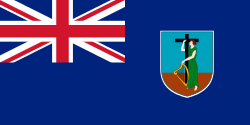
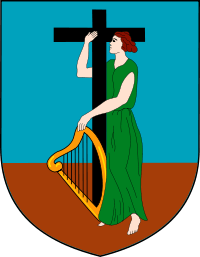
.jpg)

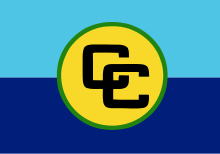
Countries.png)